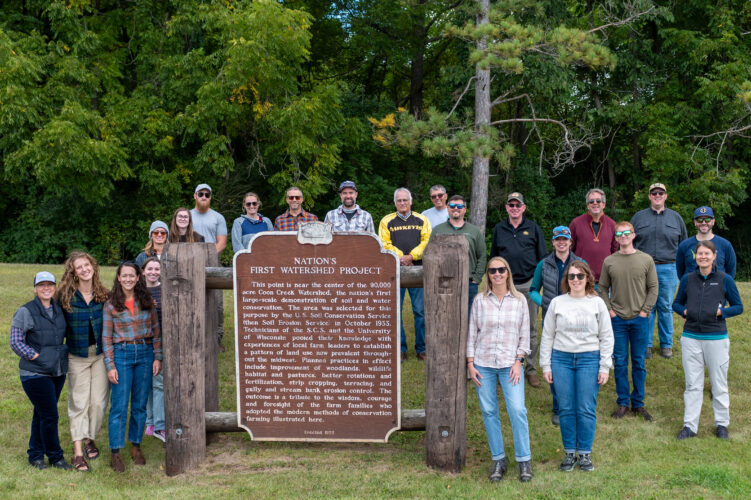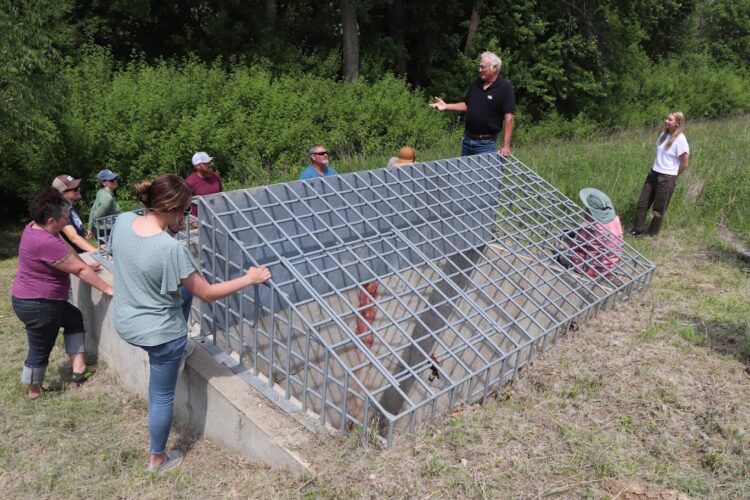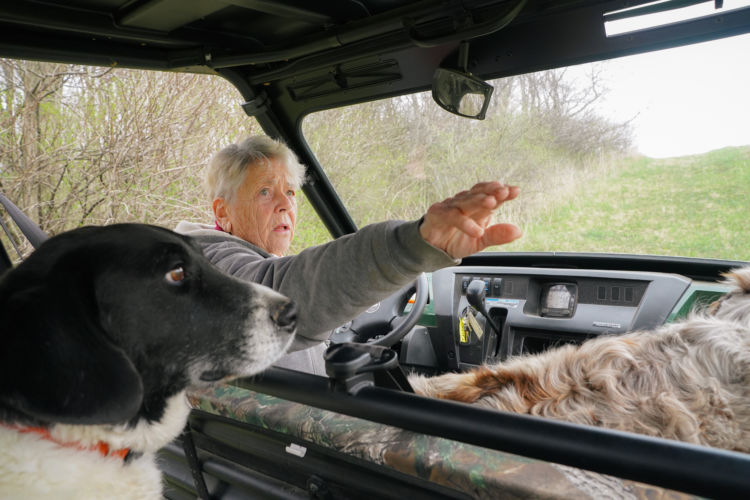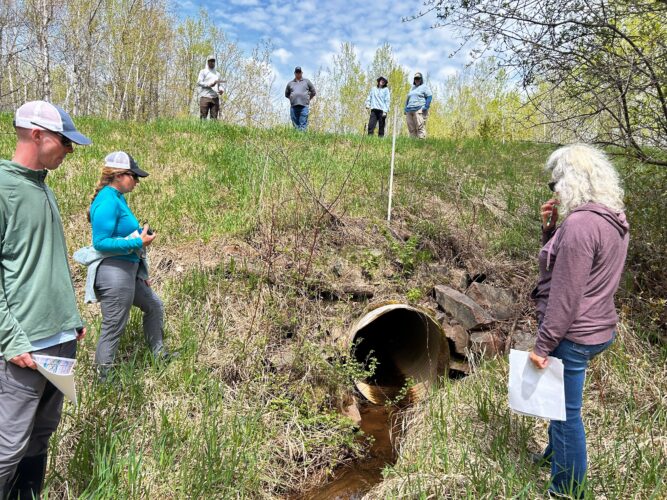Wisconsin Wetlands Association (WWA) was invited by Coon Creek Community Watershed Council (CCCWC) to join their neighbors in the Driftless Area for a two-part watershed management-themed networking and informational exchange. The two events, one in northeast Iowa in June and a second in southwest Wisconsin in September, included field tours that highlighted new and old ways of slowing the flow of flood waters, or “making running water walk” as they say in the Coon Creek Watershed.
WWA participated alongside watershed conservation professionals, farmers, engineers, community members, and other watershed conservation enthusiasts from the Driftless Area and discussed the complexities and challenges of flooding in the region.
At the first event, the group toured multiple sites in and around Postville, West Union, and Elgin in northeast Iowa. The group traded their different and shared experiences across state lines around flooding, and then Iowa participants shared some of their watershed-based agricultural and conservation solutions. Some of the highlights included learning about the Iowa Flood Center’s development of flood monitoring, mapping, and forecasting tools, visiting a restoration site on the Yellow River, and seeing two on-road structures—an alternative to conventional culverts that were pioneered in northeast Iowa. These structures use the roadway embankment as a dam, restricting flows into it before slowly releasing from the structure during large precipitation events.
The second event brought Iowa neighbors over state lines to Wisconsin. Monroe County kicked off the line-up with a presentation of their Little La Crosse Watershed Infrastructure Resiliency Initiative, a flood vulnerability assessment project leveraging federal transportation funding to increase the resilience of roads and aquatic systems. This was followed by a fantastic evening gathering on a multi-generational farm, with a field tour the following day that took the group on a journey through the long history of agricultural, soil, and water conservation in the Coon Creek Watershed. Dams are very much a part of this story in the flood-prone region, and the field tour included visiting two PL566 dams that failed in the region’s catastrophic 2018 flood.
It is important to bring people and neighbors together to talk about their shared experiences and knowledge around flooding. “Flooding is traumatic; it has happened, it’s been happening, and it will keep happening”, said Dave Hettenbach, Vernon County Conservationist. “We can use our shared experiences and stories along with data to make decisions about how to manage going forward”.
We at WWA are excited about the momentum towards more watershed-based practices for flood resilience in the Driftless region (and beyond), and we’re grateful to have learned more about it all at these events.
Learn more about the many Driftless Area groups that made these events happen:
Related content
How one landowner is inspiring her community to care for wetlands
Recapping “Resilient Streams, Resilient Infrastructure” joint session at the Wetland Science Conference




